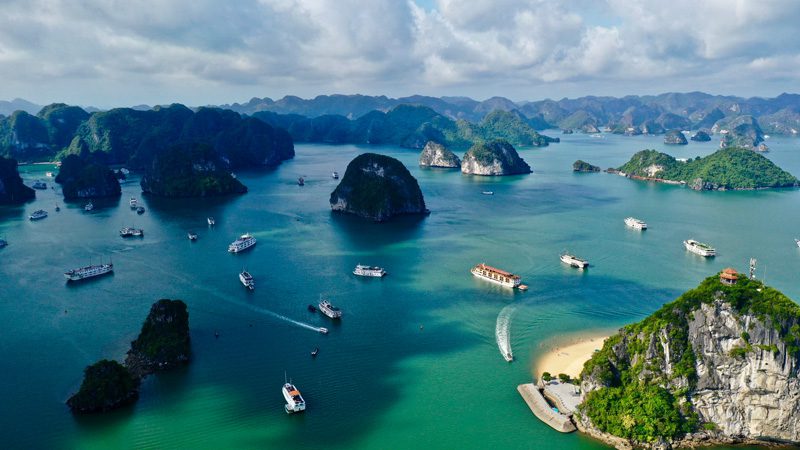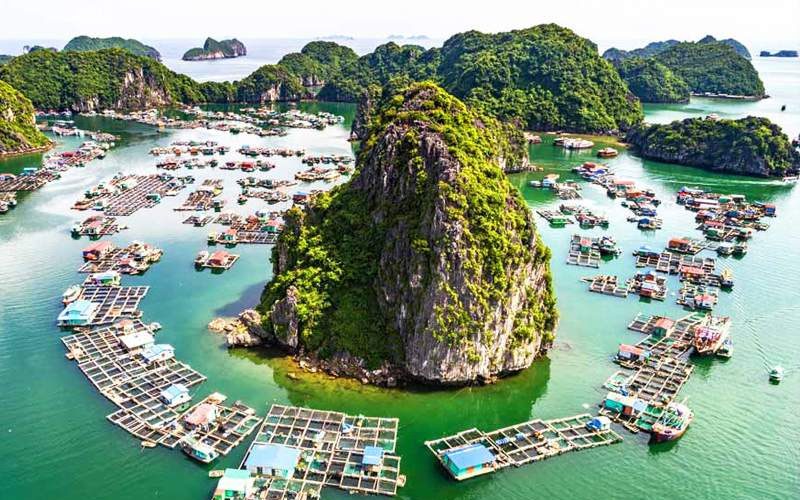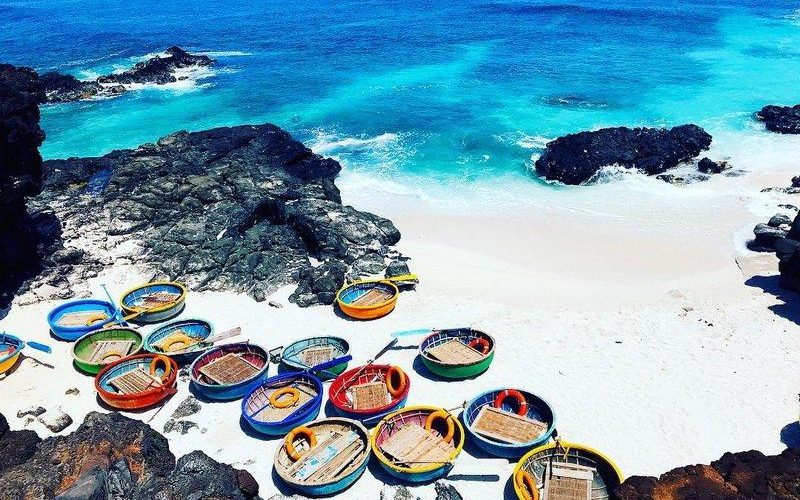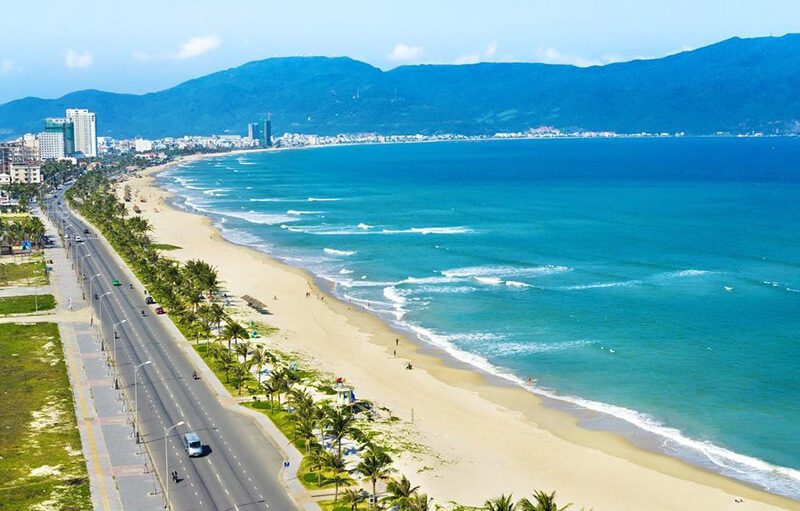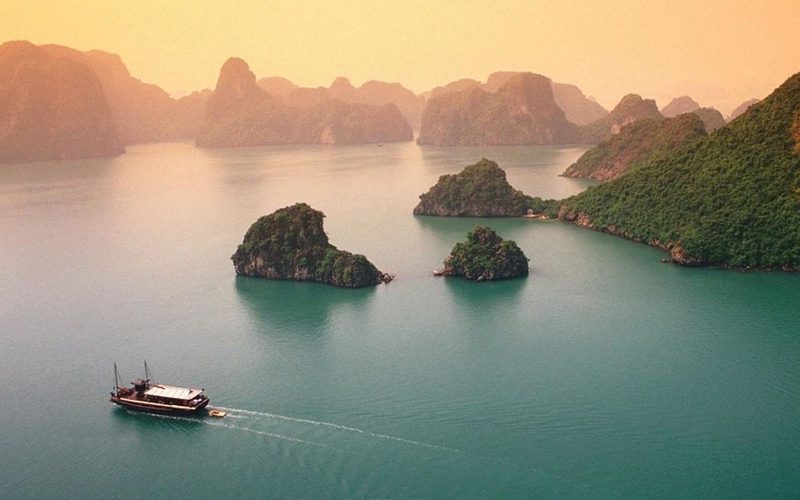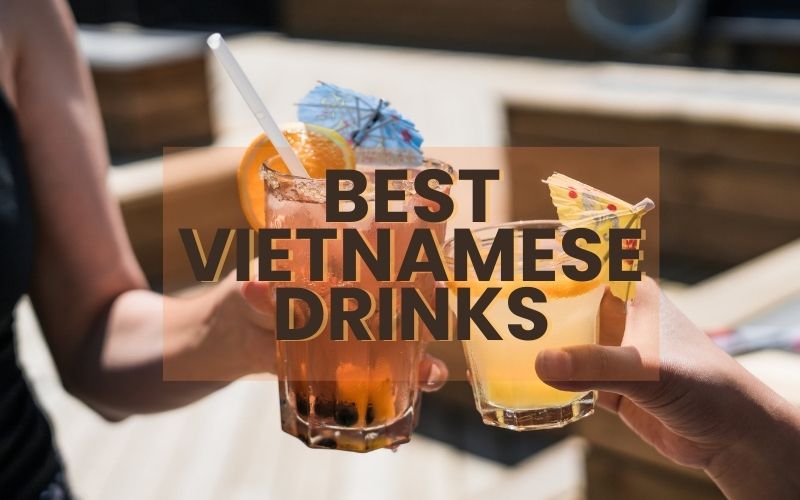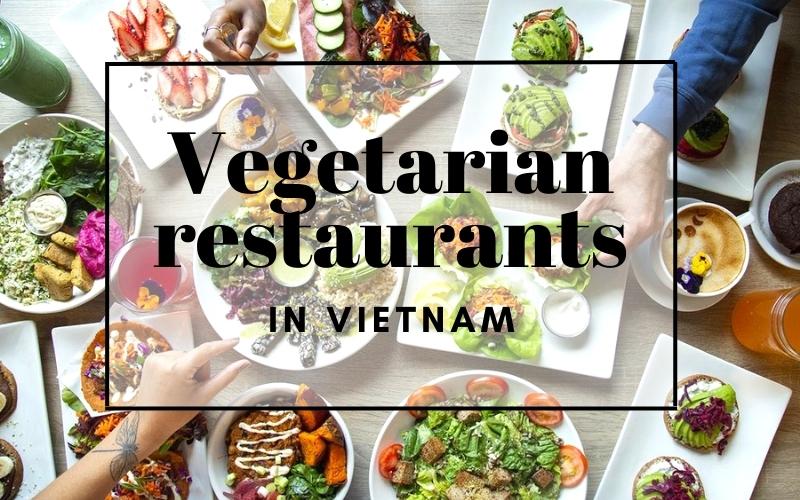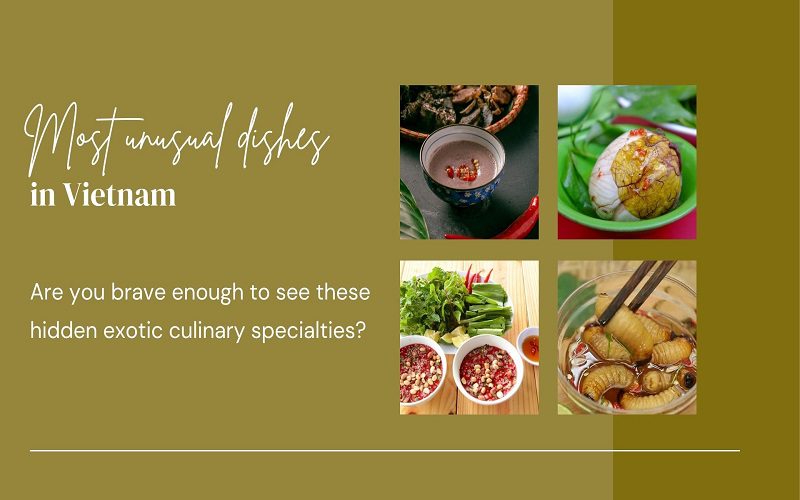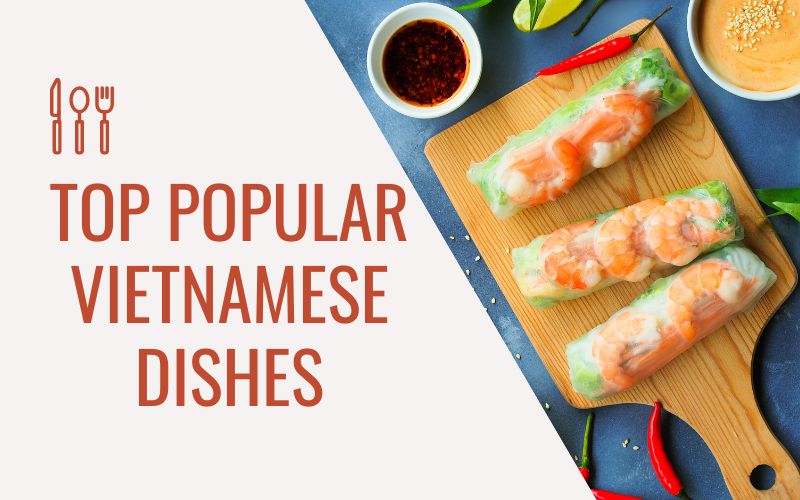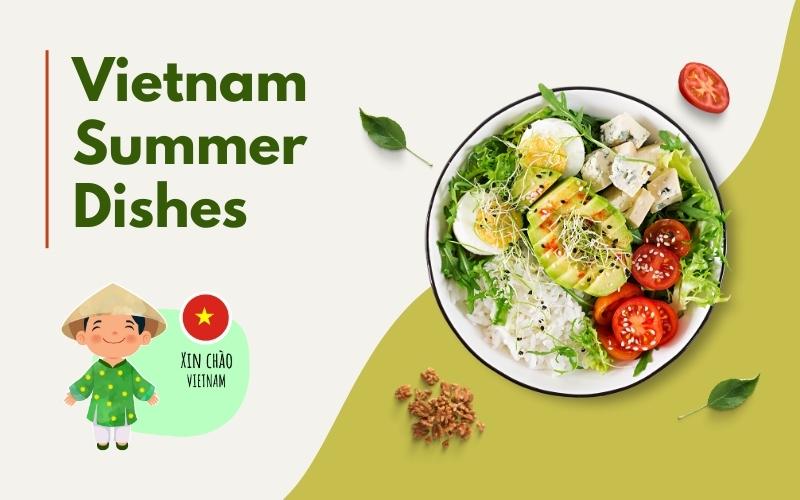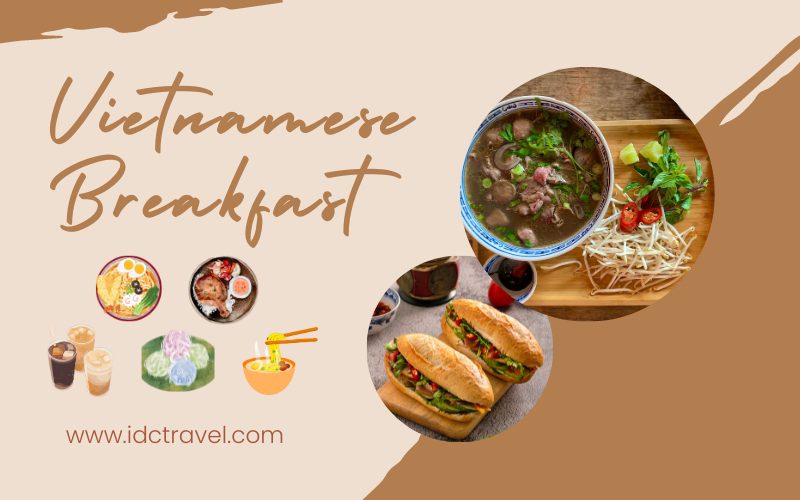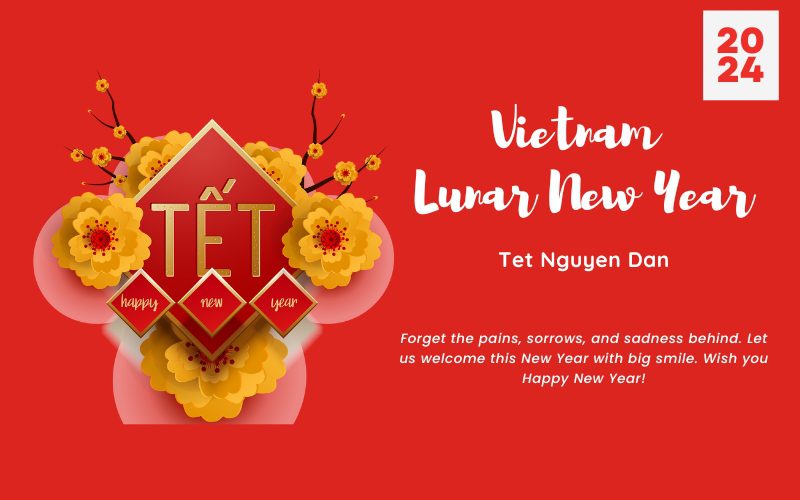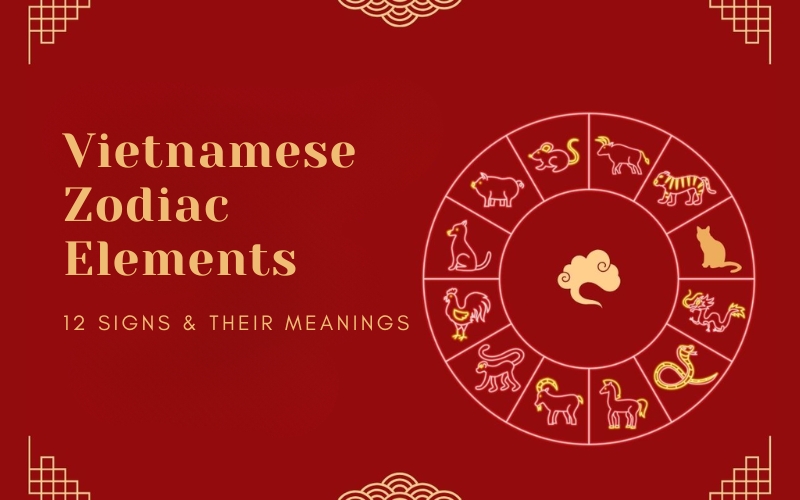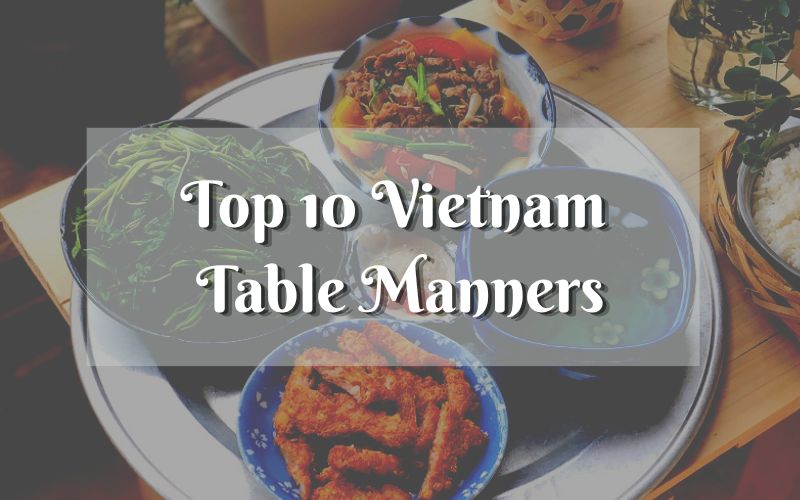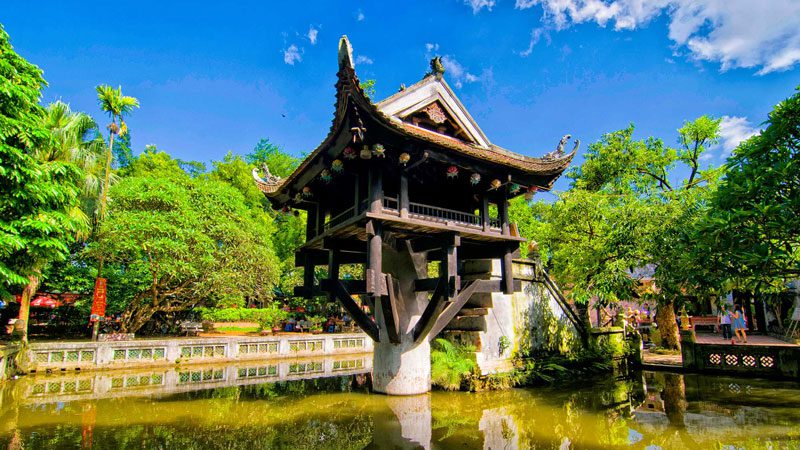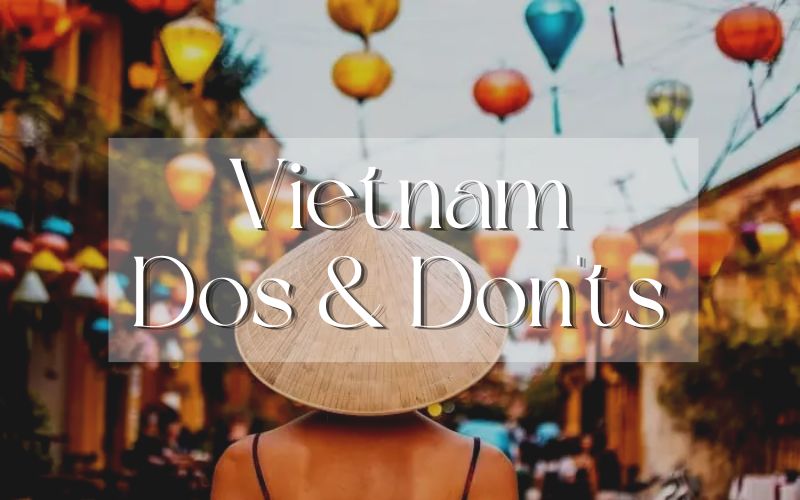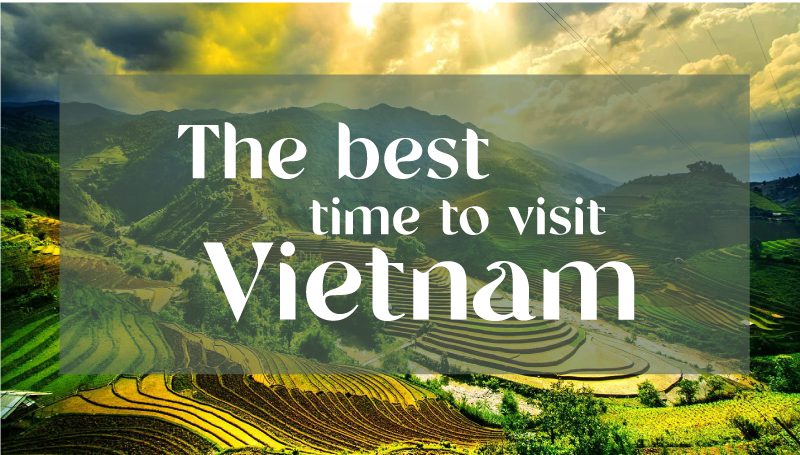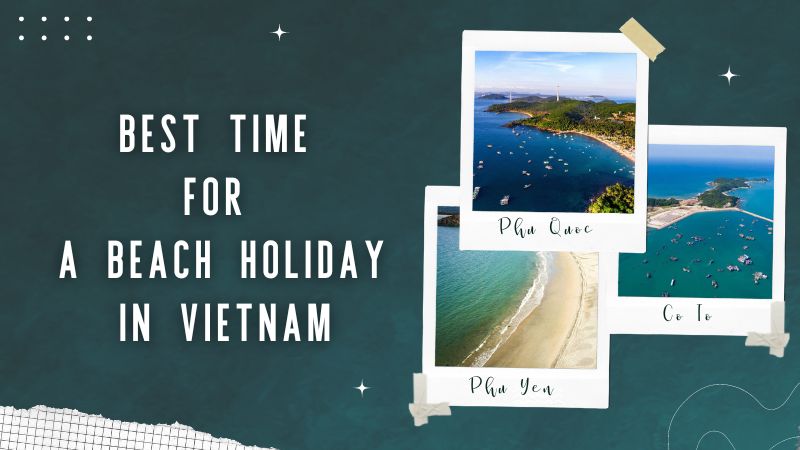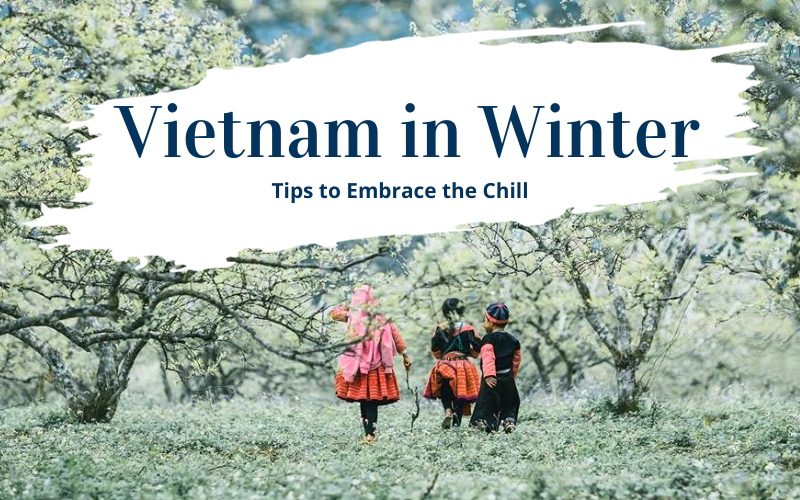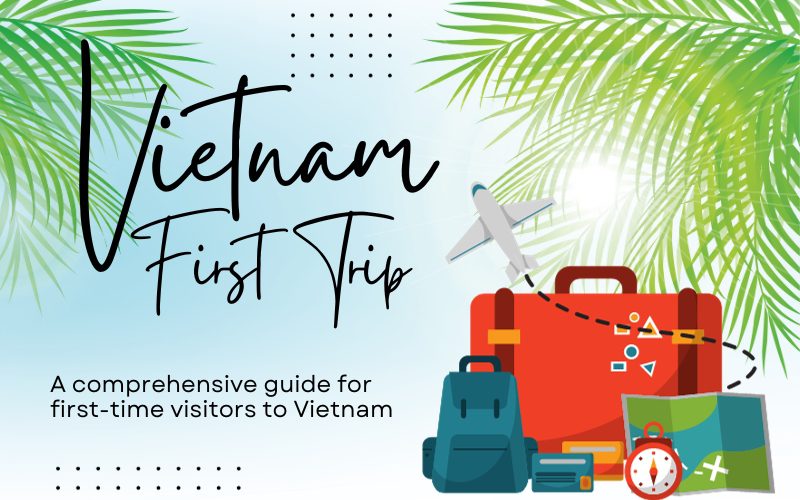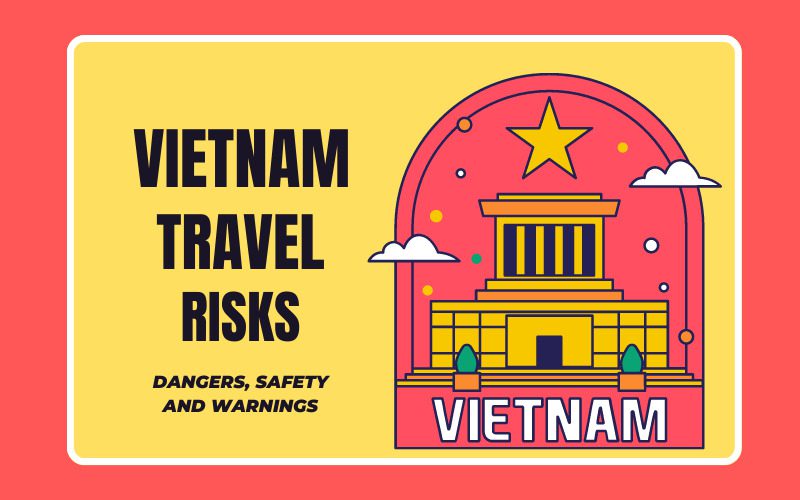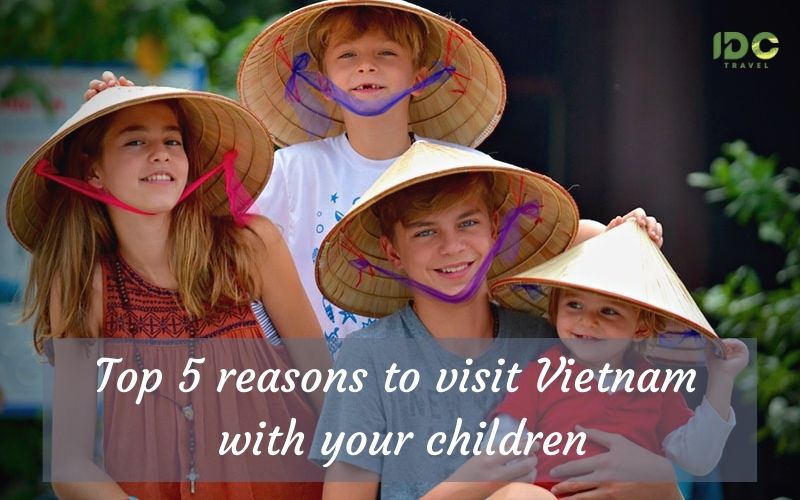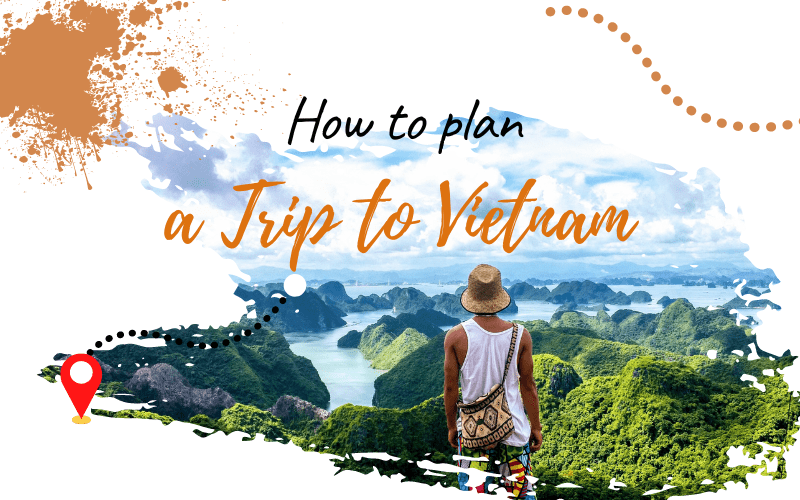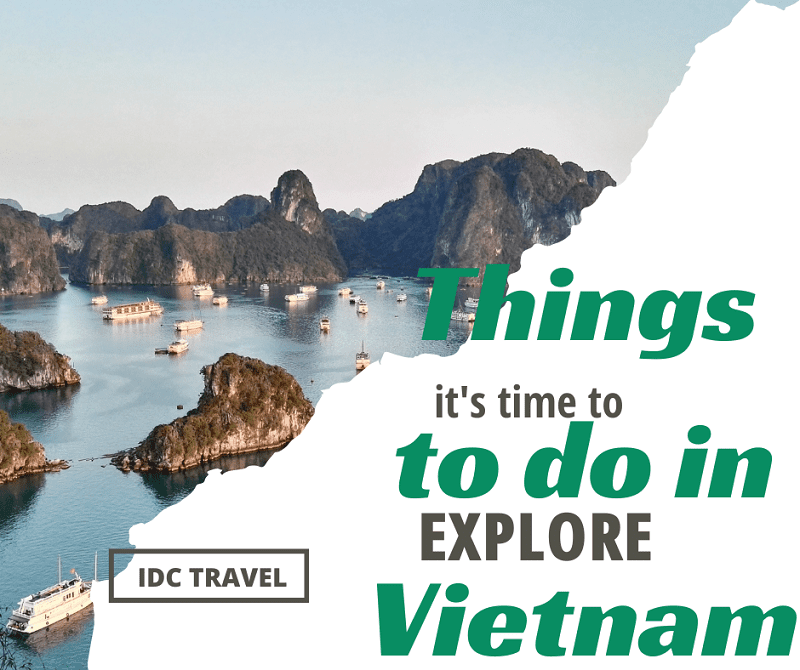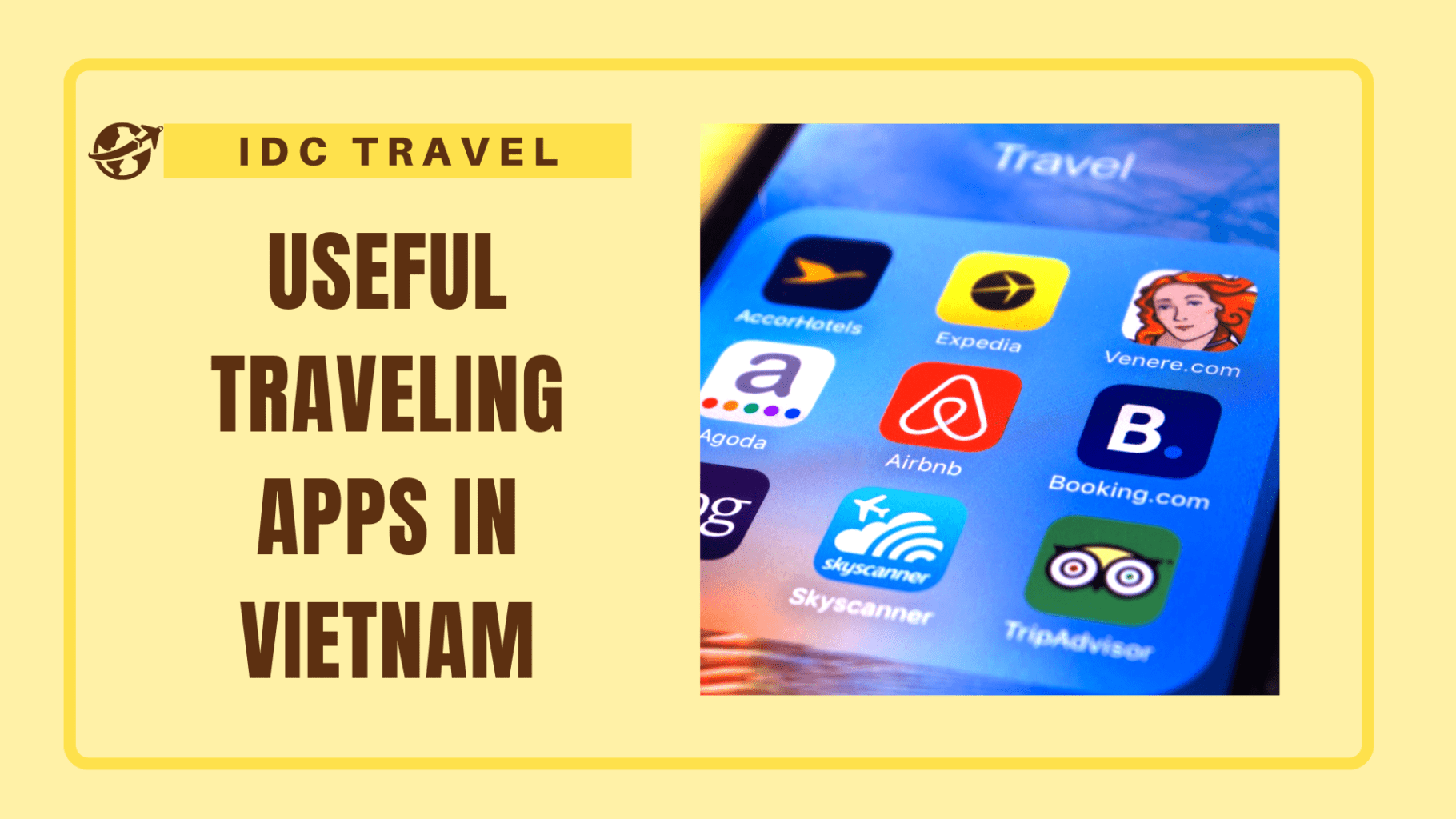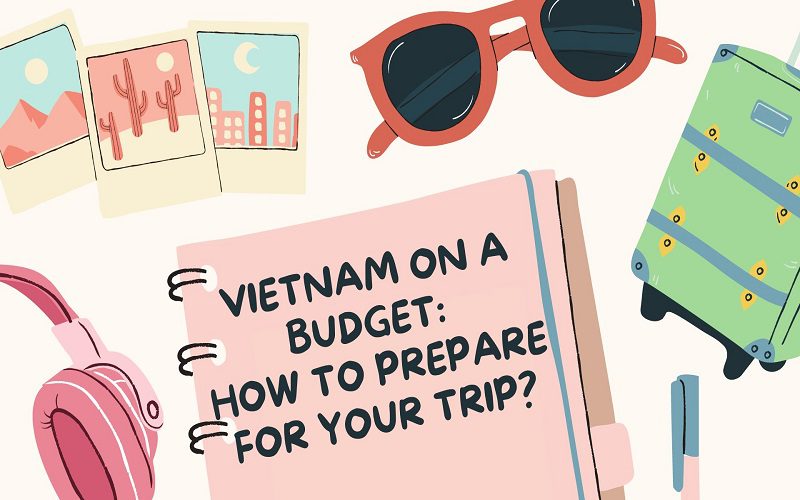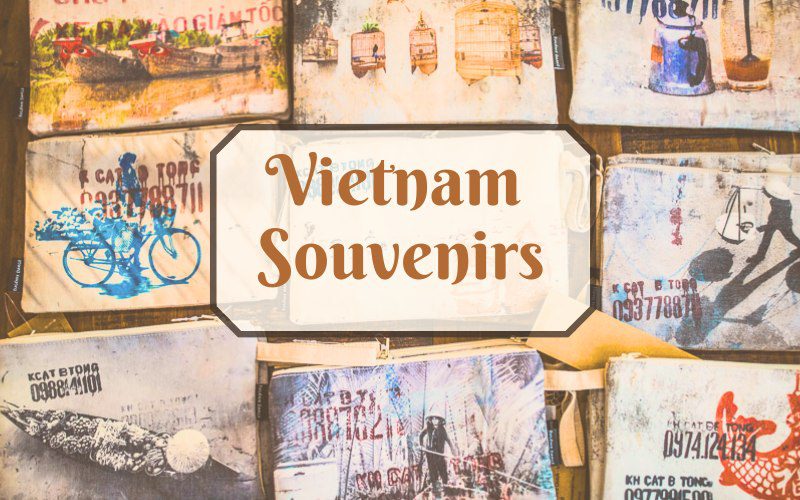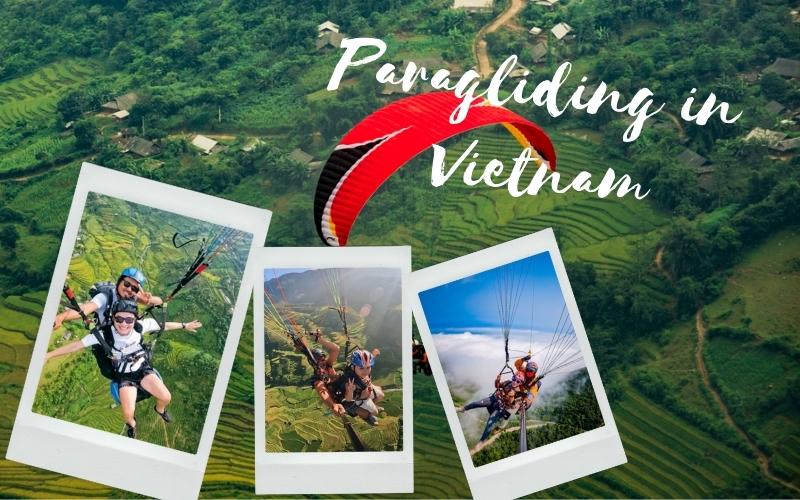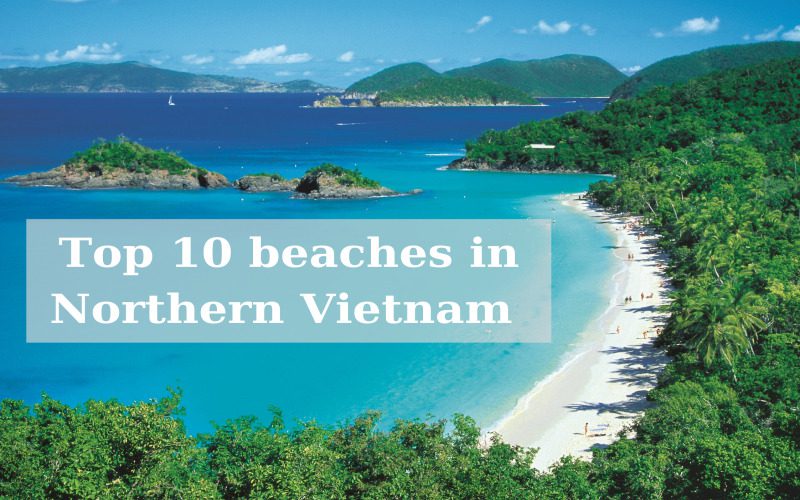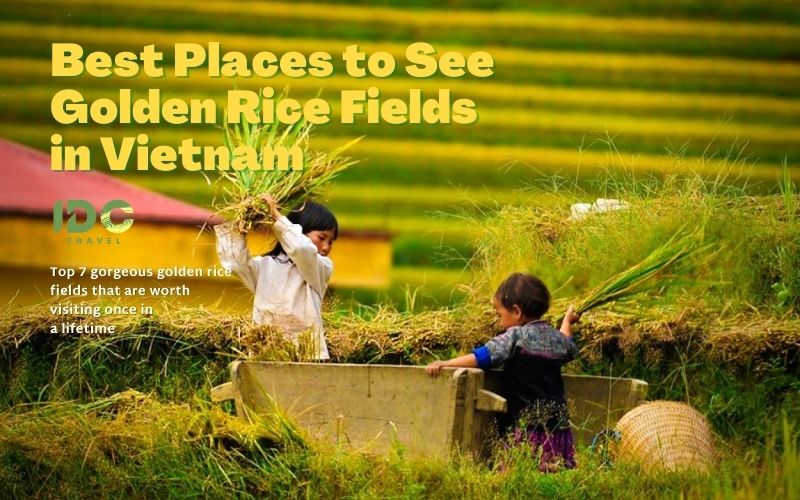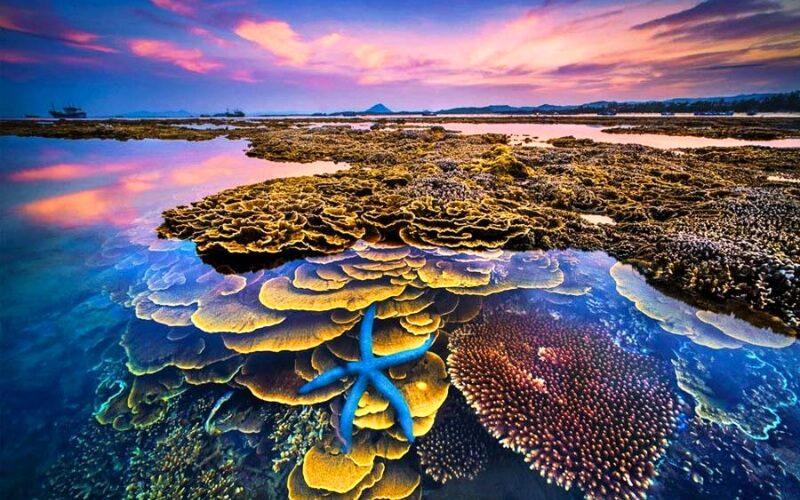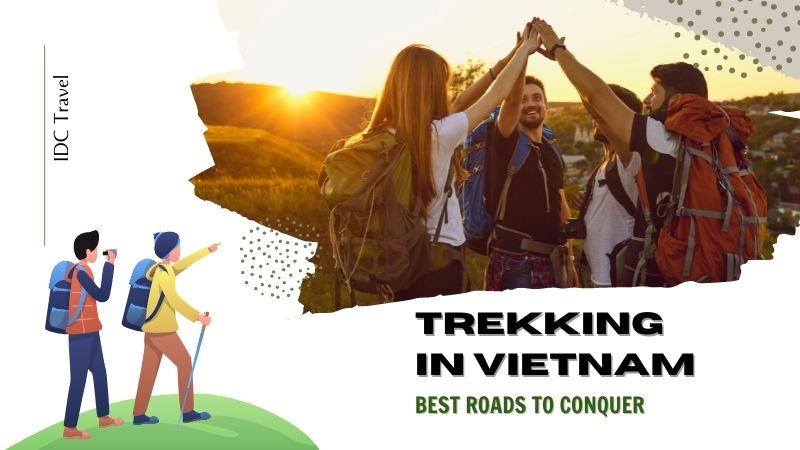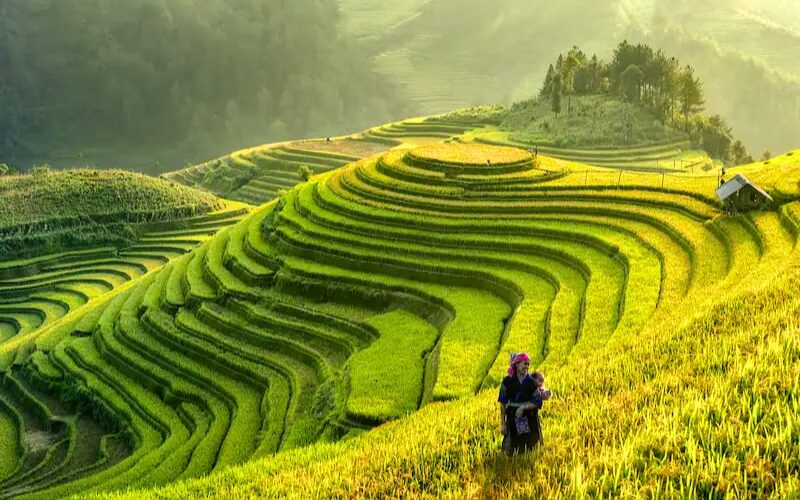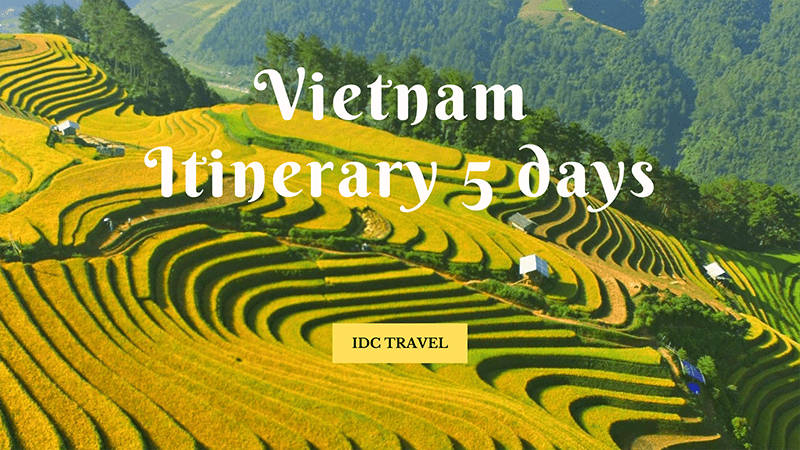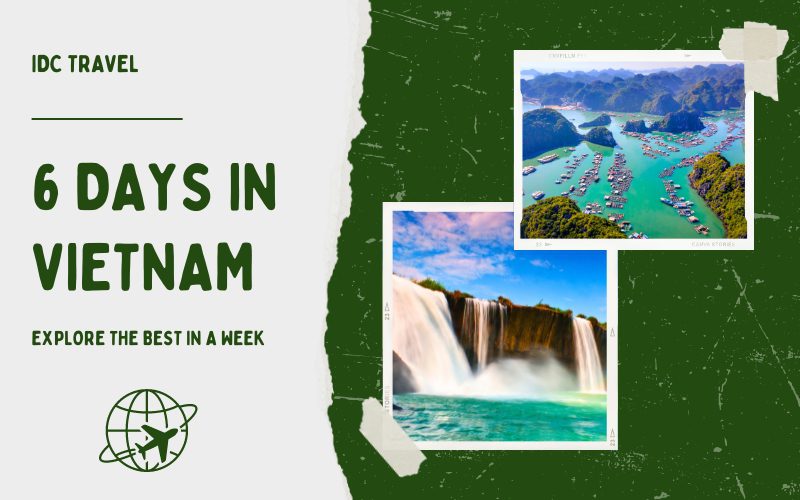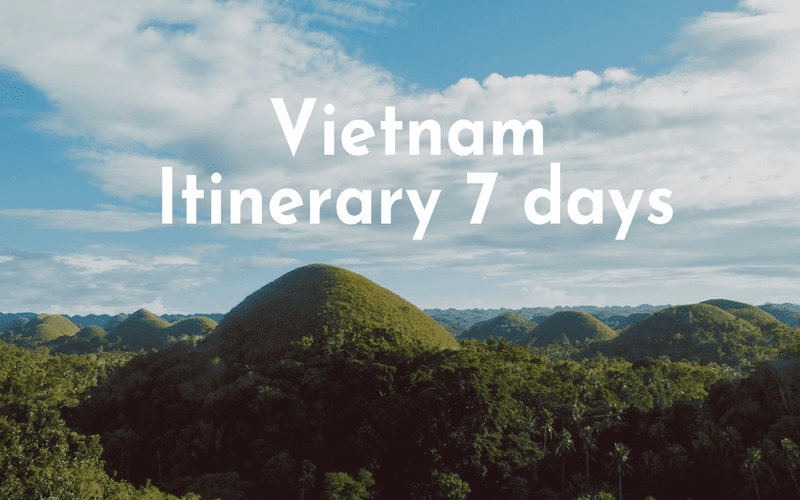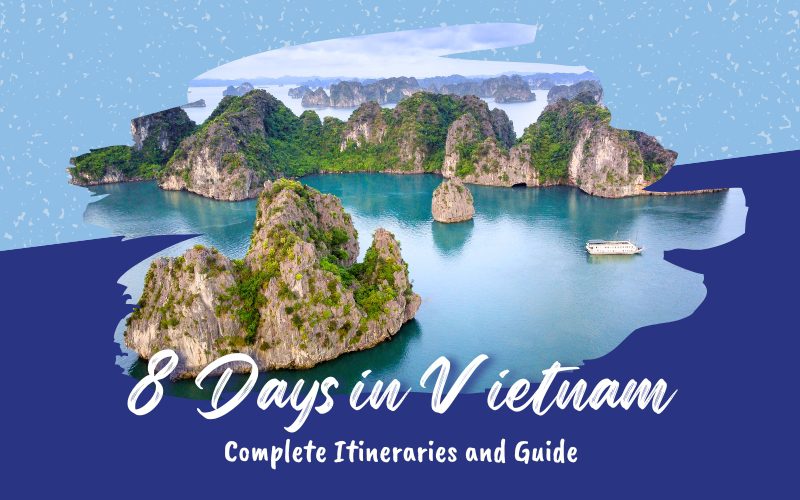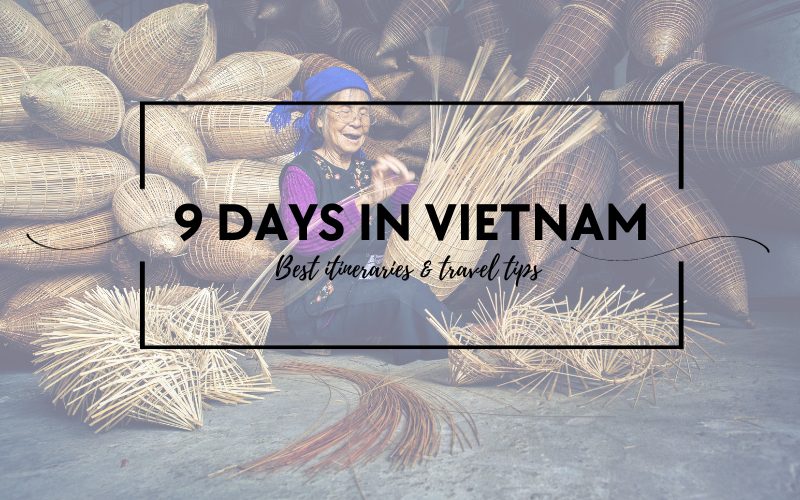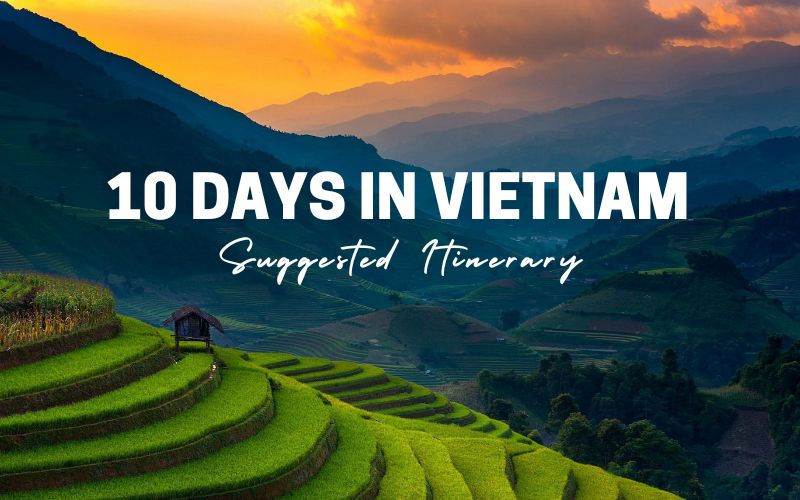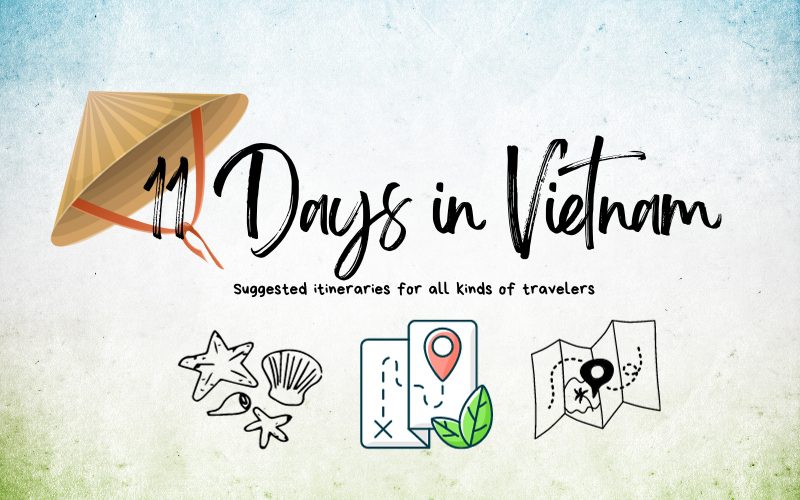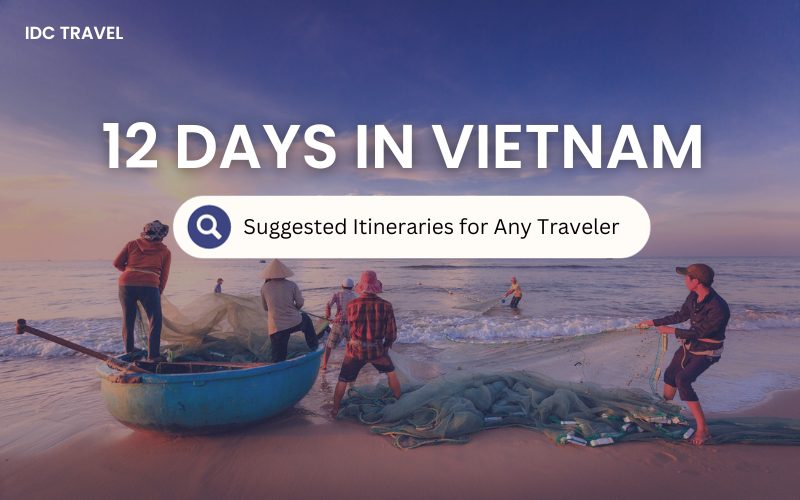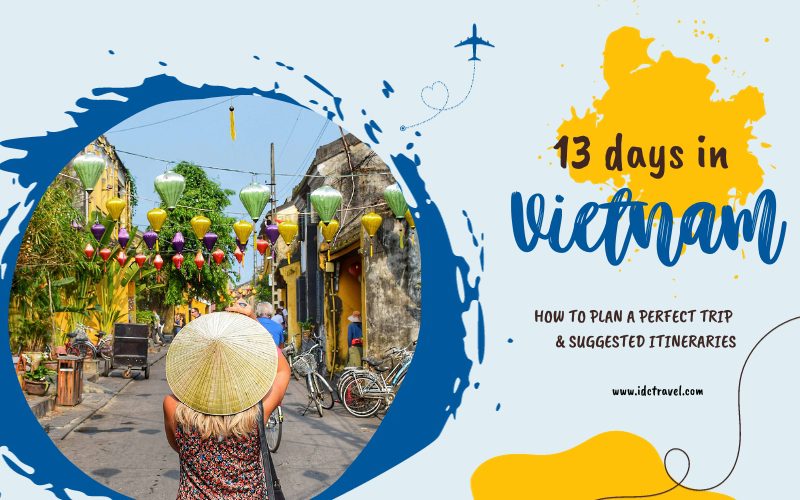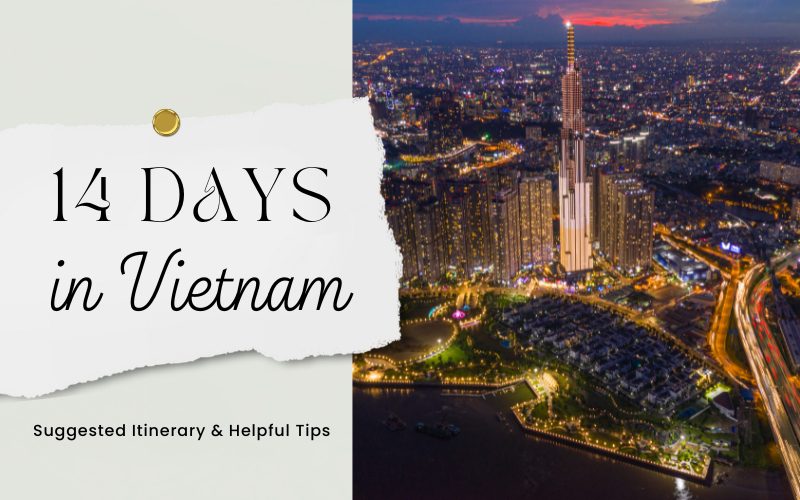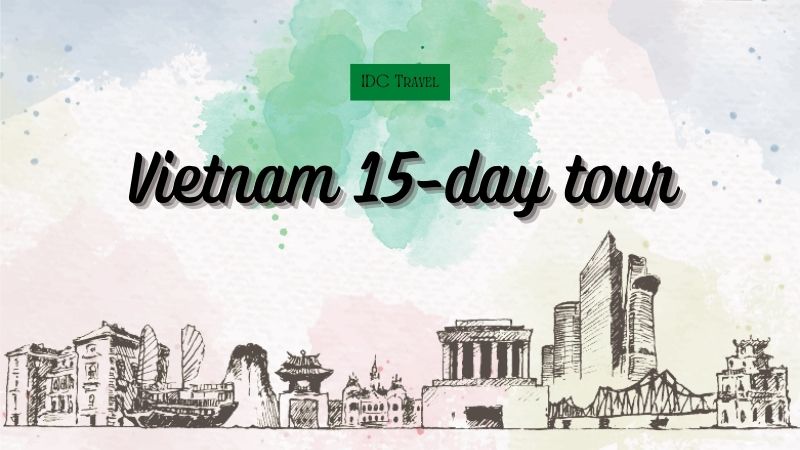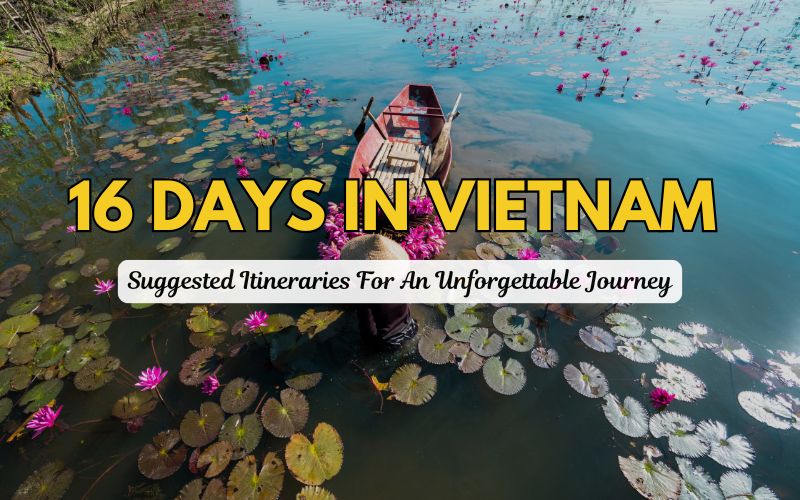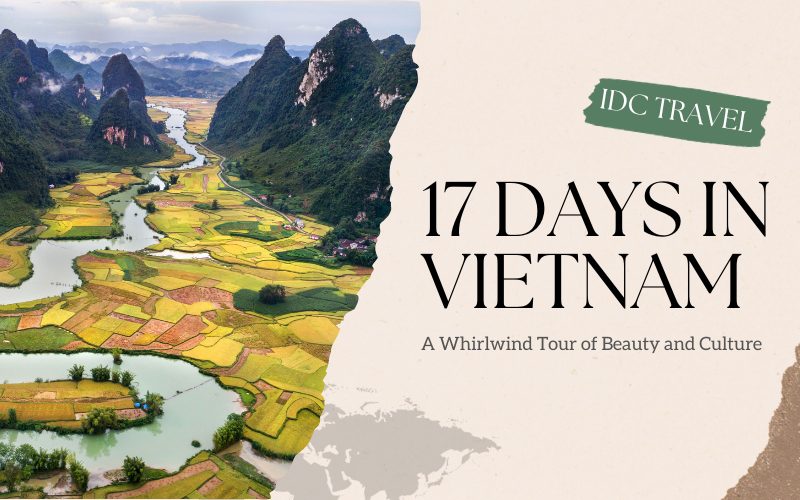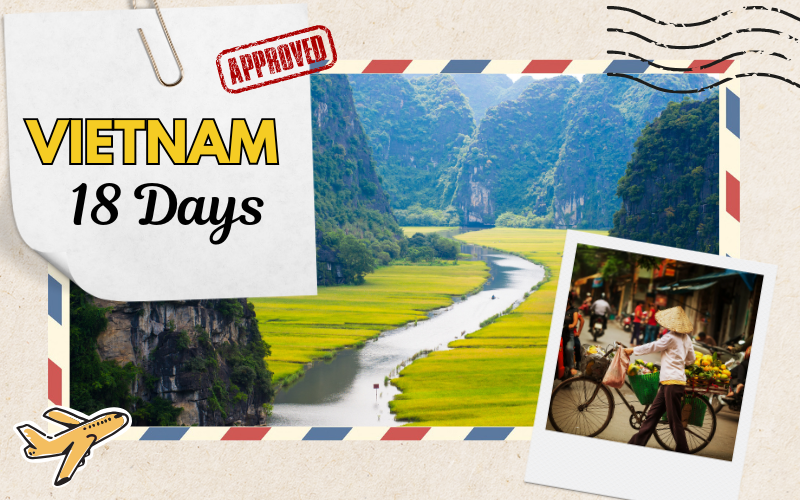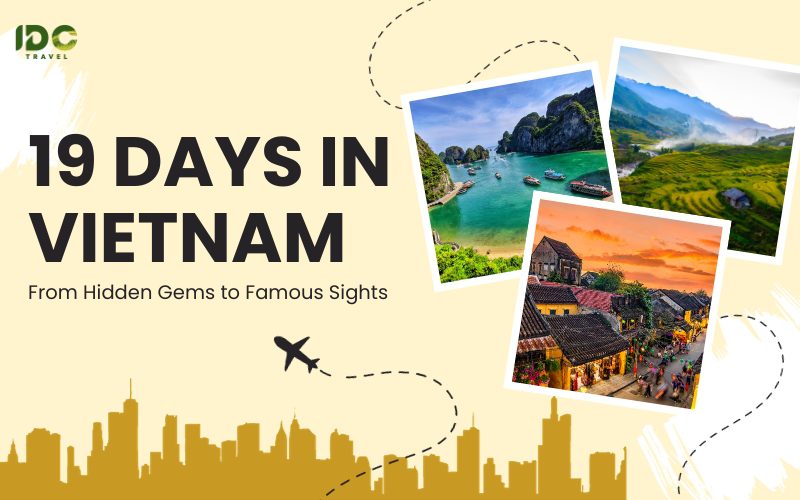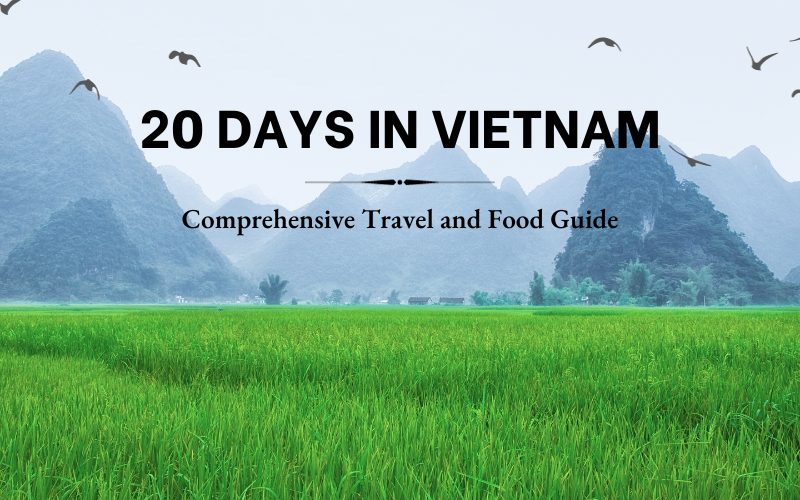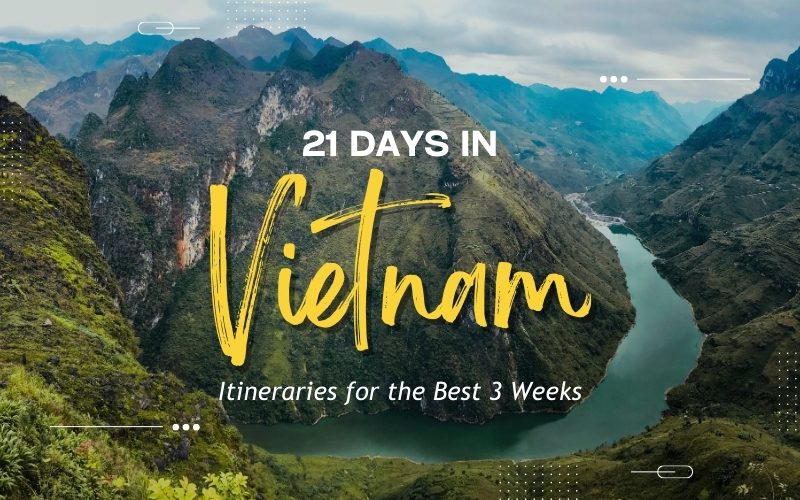Everything you need to know about Vietnam is presented here, in this comprehensive Vietnam Travel Guide.
General information
- Location: Southeast Asia
- Capital: Hanoi
- Population: about 97 million
- Language: Vietnamese
- Currency: Vietnam Dong (VND)
- Main religion: Buddhism, Catholicism, Confucianism, Caodaism
- Minority ethnic groups: 54 ethnic groups
- Time zone: UTC+7.
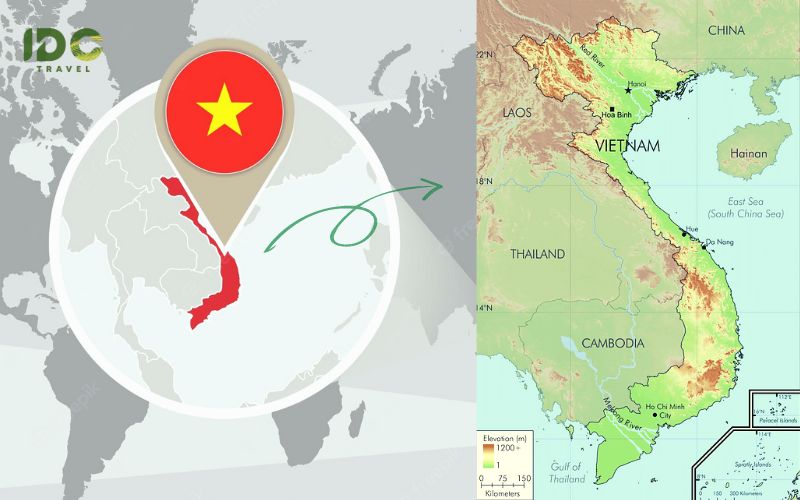
Map of Vietnam
Vietnam’s beautiful culture is reflected in more than 4,000 years of history. Historical masterpieces such as Thang Long Imperial City, Tran Quoc Pagoda, Temple of Literature, and Thien Mu Pagoda have attracted millions of tourists. Vietnam is also home to many scenic spots, many of which have even been registered by UNESCO for their spectacular beauty, such as Halong Bay, Phong Nha-Ke Bang national park, etc. If you are planning a trip to Vietnam, the Vietnam travel guide in this article will be helpful.
Vietnam always attracts tourists with the beauty of its unique climate. The main type of climate is the tropical monsoon, which is divided into four distinct seasons in the North. Vietnam, with sunny weather almost all year round and not-too-cold winter, is truly a paradise, especially for European tourists. Lying on the beaches, and enjoying golden sunshine and cool breeze will make your trip unforgettable. Having a typical climate also allows Vietnam to have an extremely rich ecosystem, as evidenced by national parks such as Ba Vi, Cuc Phuong, and so on.
In terms of food, Vietnam is one of four Asian countries featured in the 2022 list of 10 countries with the best cuisine in the world. Based on surveys conducted by The Travel magazine, which specializes in travel experiences in Canada, Vietnam is in fifth place. When it comes to Vietnamese food, The Travel writes: “…the wide variety of food in the country will leave visitors perplexed. It is a great place to begin a food exploration”. Foods you must try include pho, bun cha, rieu cua (crab noodle soup), ca phe trung (egg coffee), etc.
And yet, coming to Vietnam is like shopping in paradise with high-quality and cheap. Not only unique handicrafts but also the service here is very good.
Want to know more about Vietnam? The information in this article Vietnam travel guides will surely help you.
Getting to Vietnam
Passport & Visa to Vietnam
The most useful and essential Vietnam travel guide is on how to enter the country legally. The passport is valid for at least six months after the date of entry to Vietnam. Holders of American, European, Australian, and Canadian passports can visit Vietnam without a visa for 15 days. If you plan to enter Vietnam at least twice without a visa, the next entry must be at least 30 days after the previous exit. Otherwise, a visa is required to enter Vietnam.
If your trip is less than 30 days and you fly to Vietnam, you can apply for a visa on arrival. To get started, you must complete an online application form to receive an approval letter. The Vietnam Immigration Department will send you a confirmation letter. Second, take your confirmation and passport with you when you travel and get them stamped at one of Vietnam’s international airports. Most importantly, carry enough cash to pay for the visa at the airport in US dollars. Other forms of payment are not accepted.
For more information, read our article visa to Vietnam.
Vietnam Currency
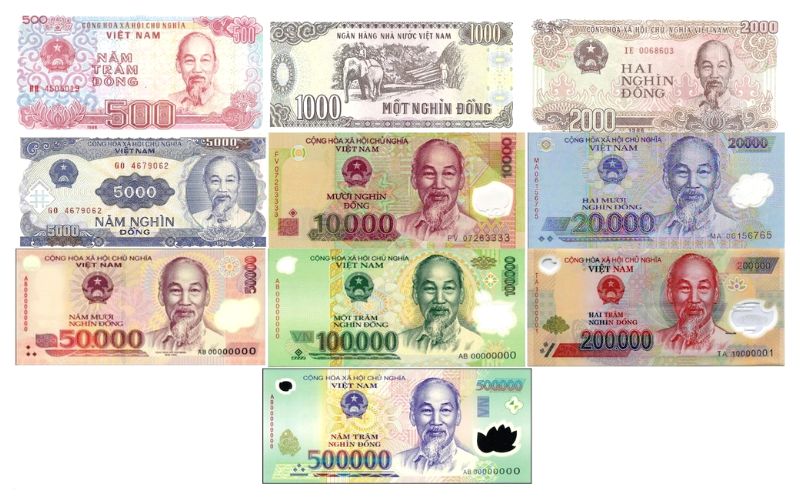
Vietnam Currency
Travelers not only to Vietnam but also to other countries should get a proper currency exchange guide to avoid complications or tricks. The official currency of Vietnam is the Vietnamese dong (VND), which is available in the following denominations: 1,000; 2,000; 5,000; 10,000; 20,000; 50,000; 100,000; 200,000; and 500,000.
You can exchange money at our airport or at any national or international bank (Vietcombank, Techcombank, TP Bank, etc.). (Shinhan Bank, General Bank, ANZ, HSBC, etc.). Unofficial exchanges such as jewelry stores are not recommended. ATMs are readily available in major cities, but if you’re visiting rural areas, bring enough cash with you.
Getting to Vietnam by Plane
Vietnam has 22 airports, 11 domestic and 11 international. Noi Bai International Airport (HAN) in Hanoi, Tan Son Nhat International Airport (SGN) in Ho Chi Minh City, and Danang International Airport (DAD) in Danang are the three main gateways.
For details, read this article.
Getting to Vietnam by Bus or Train
Every day, new routes and services make it easier to get to Vietnam from the neighboring countries of China, Laos, and Cambodia. Travelers entering Vietnam this way must prepare visas in advance, as Vietnamese land ports do not issue visas on arrival.
Getting to Vietnam by Boat
A boat trip is a good option that will surely bring you an interesting experience. Travelers can take a boat trip to some of Vietnam’s most beautiful locations, including Halong Bay, the Mekong Delta, and others. There are currently only two trains that run from Thailand to Vietnam and from Singapore to Vietnam. Other cruise ship trains have yet to resume operations.

Boat trip to Vietnam
Weather in Vietnam
Weather is one of the most important things to keep in mind when traveling to Vietnam. In the article Vietnam travel guide, we will provide you with the most useful information about the weather and climate in Vietnam.
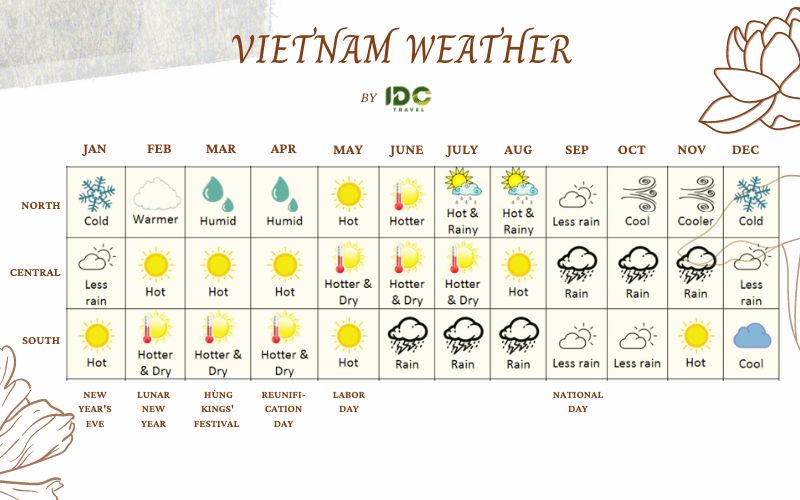
Vietnam Weather
The Northern part of Vietnam has a subtropical climate, while the Southern part has a monsoon climate. Due to the altitude and latitude, Vietnam’s weather conditions, especially the temperature, vary greatly. South Vietnam appears to have stable temperatures throughout the year, while the North has significant seasonal variations.
The warmest months are usually March-May in the south and May-July in the north. During this period, you should visit Phu Quoc, Da Lat, Ha Giang, Nha Trang, and other tourist destinations to cool off the heat.
In contrast, the coldest month is January, with low temperatures sometimes dipping below 0 degrees Celsius in some provinces. The cool season usually lasts for 2.7 months, from December 12 to March 1, with an average daily high temperature below 22 degrees Celsius. Tourists should visit Hanoi, Ha Long, Sapa, Phu Quoc, etc.
Northern Vietnam: Northern Vietnam has four distinct seasons (spring from March to April, summer from May to August, autumn from September to November, and winter from December to February). Due to the difference in altitude, the temperature in the mountains is lower than in the delta areas.
- Summer: Summer in northern Vietnam is hot and humid. There is also heavy rain in the area, so we do not recommend visiting the mountains in summer.
- Winter: temperatures in the mountains can drop to 10 degrees Celsius or even 0 degrees Celsius.
- Spring: in spring, the region experiences rain and high humidity.
Central Vietnam: The climate in this region ranges from hot to cool throughout the year.
- February – August: this is the dry season in central Vietnam, perfect for swimming, snorkeling, and diving.
- September – mid-December: typhoons may cause flooding in Hue, Danang, and Hoi An at this time. Nha Trang, Da Lat, and Mui Ne are less affected.
Southern Vietnam: like the central region, it is warm all year round
- November – early May: this is the dry season, having peak temperatures in February and April.
- May – early November: The rainy season is from May to early November, but the rain is short enough not to affect your trip.
Best time to visit Vietnam
Due to the variety of weather and climate, travel lovers can visit Vietnam every month. Spring (March to April) is typically the best time to visit Vietnam because the days are generally pleasant, temperatures are moderate, and precipitation is minimal. There are some specific times of year to consider depending on where you intend to visit.
If you are finding a sunny beach to spend the whole day sunbathing, Phu Quoc must be a good choice. The best time to visit Phu Quoc is from October to the end of March. The temperature is around 28 degrees Celsius at this time of year, with little rain, making it ideal for relaxing in resorts and participating in beach activities. Besides, February-May is considered the best month to visit Nha Trang. The average temperature during this period is 26 to 27 degrees Celsius. If you want to dive in Nha Trang, January and October are the best months to visit this beach town. The scenery of Halong Bay is spectacular and you can swim there all year round, except for the typhoon season from July to August.
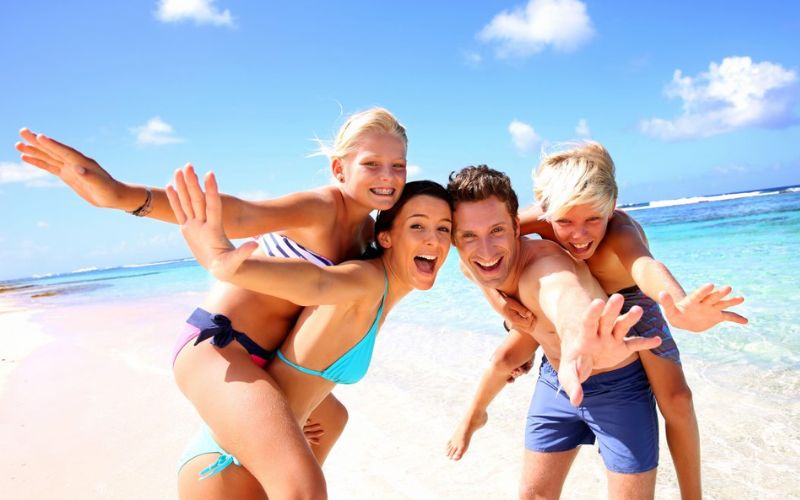
Beach vacation in Vietnam
For mountain lovers, Ha Giang and Sapa are in the far northeast’s mountainous regions, where the winter cold can be freezing and snowy in late December and January. The dry season, from September to April, is the best time to visit the mountains of northern Vietnam.
The months of September to November are ideal for visiting Hanoi and experiencing the most beautiful season of the year. February is considered the best month to visit Ho Chi Minh City. Humidity and precipitation are at their lowest levels for the year, and temperatures have not yet reached their peak.
Still, wondering where to go? Please read this post.
Getting around in Vietnam
As you know, traffic in Vietnam is quite complicated. Therefore, it’s necessary for visitors to read Vietnam travel guide on how to move safely and inexpensively.
Streets in big cities such as Hanoi and Ho Chi Minh City are chaotic and crowded, especially during rush hours. If you cross the streets, don’t forget to stay calm and walk slowly with your heads high. Feel free to ask the locals if you need some help.
Taxis are a convenient way to get around. Grab, Be, and Gojek are widely-used apps that provide users with transportation in Vietnam, including both car and motorbike services. These apps are available in 19 provinces of our country, including famous tourist destinations such as Hanoi, Ho Chi Minh City, Quang Ninh, Da Nang, and Nha Trang.
You can also rent a bicycle or motorbike at the hotel. The Cyclo is a fun means of transportation and costs no more than VND 100,000.
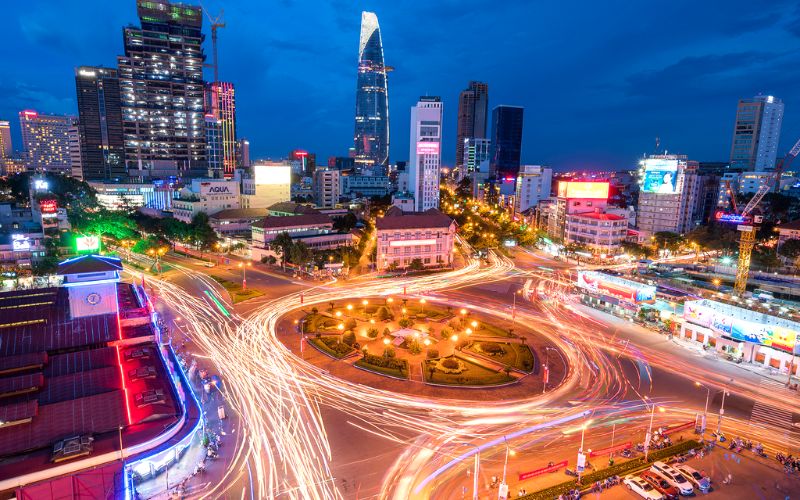
Rush hours in Ho Chi Minh City
Best places to visit & activities to do in Vietnam
The North
Hanoi, Vietnam’s capital, must be one of the most popular tourist destinations recommended by any Vietnam travel guide. It is the country’s hectic heartbeat, a place that can both fascinate and confuse tourists. With 36 establishments, Hanoi’s Old Quarter has retained its charm with many shops, French bistros, restaurants, bars, and pubs. Walking is ideal as the Vietnamese government forbids driving around the old town on weekends. Popular to both local people and tourists, Hoan Kiem Lake allows visitors to relax. You can also go to Ngoc Son Temple and Hook Bridge to learn about famous sea legends and restored swords. It’s a good idea to pay a trip to Ho Chi Minh Mausoleum and One Pillar Pagoda which are very close to West Lake.
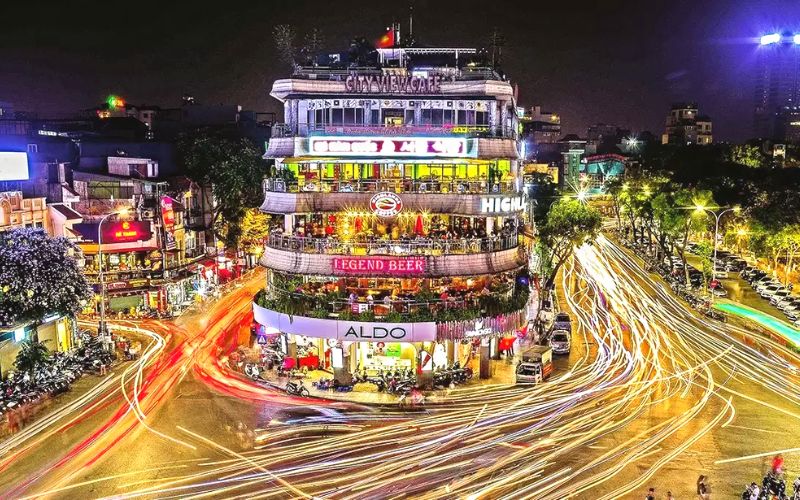
Hoan Kiem Lake by night
The western mountainous region of northern Vietnam has majestic mountain ranges, misty mountains, cloud-covered passes, beautiful terraced fields, and blooming forests. Sapa is the perfect destination for nature lovers looking to get away from pollution. Located in the western part of Heping Province, Mai Chau Valley has long been a tourist destination attracting hundreds of thousands of tourists. You can also Phan Din Pass, located on Route 6. It connects Dien Bien and Son La provinces. Along with O Quy Ho, Ma Pi Leng and Khau Pha Pass, Pha Din Pass is known as the “Four Peaks of the North Mountain”.
Without a doubt, Halong Bay is one of the most popular tourist destinations in Northern Vietnam. The Cat Ba Archipelago is located in Vietnam’s Halong Bay. While the archipelago contains over 360 islands, Cat Ba is the largest. Bai Tu Long Bay, which is adjacent to Halong Bay, has a sinking limestone plateau, beautiful blue waters, and an abundance of small islands. There are a variety of cruises that can take you to the bay’s highlights. Visitors can spend their nights onboard while snorkeling, kayaking, or sunbathing during the day.
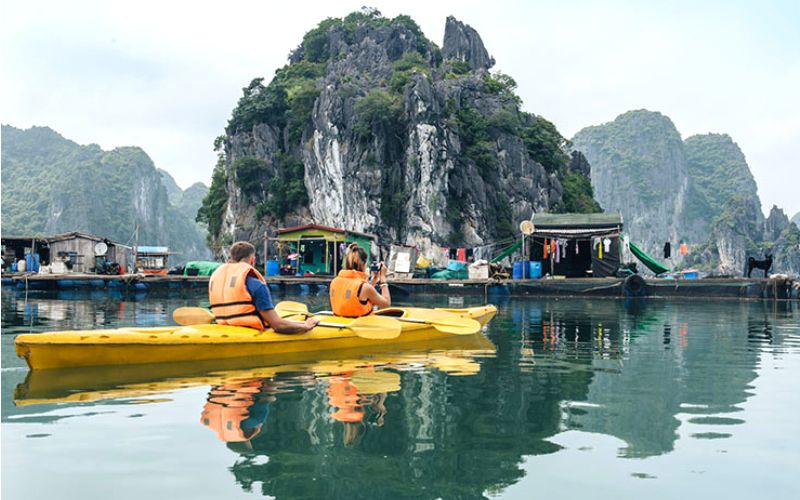
Exploring Halong Bay
The Central
Hue, one of Vietnam’s most historic cities, is brimming with relics from the reign of the 19th-century Nguyen emperors. Hue is the perfect place to visit if you want to immerse yourself in history. Besides, Da Nang is a lovely coastal city to the south of Hue. With the historic city of Da Nang recognized as a UNESCO World Heritage Site, it’s no surprise that this coastal city with a rich history retains its charm and authenticity. Its spectacular mountain temples, well-decorated bars and restaurants, and other amenities would entice you to stay longer.
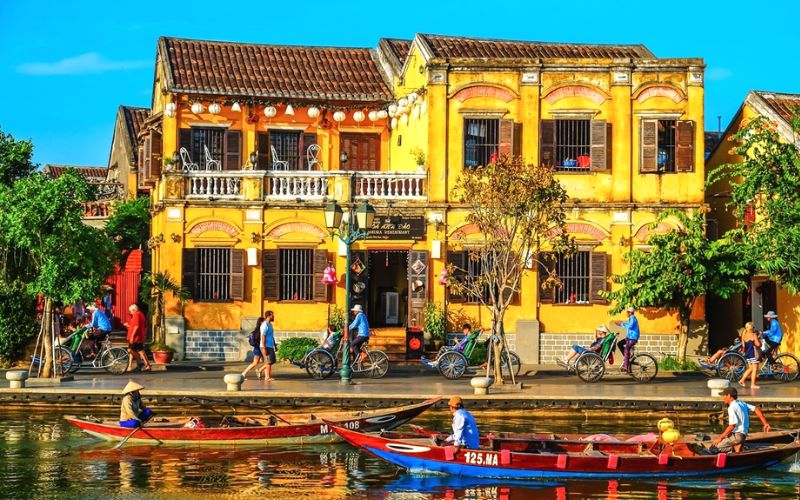
Hoi An
A famous destination, Da Lat, is often referred to as the gem of Lam Dong Province, thanks to its picturesque scenery that attracts visitors all year long. The city has been one of the leading tourist destinations in Vietnam with a number of international hotels located there. Another well-known city, Hoi An, a World Heritage Site, bears witness not only to the variety of landscapes, but also to many years of cultural interference between the three countries of China, Japan, and Vietnam.
The South
Ho Chi Minh City (Saigon) is the most developed and somewhat chaotic city in the country, which was once called the “Pearl of the Far East”. The Mekong Delta, located in the southwest of Vietnam, is famous for its fertile land, tropical orchids, simple people and unique floating markets that attract many tourists who come to seek peace. Cu Chi is another popular tourist destination with 250 kilometres of tunnels.
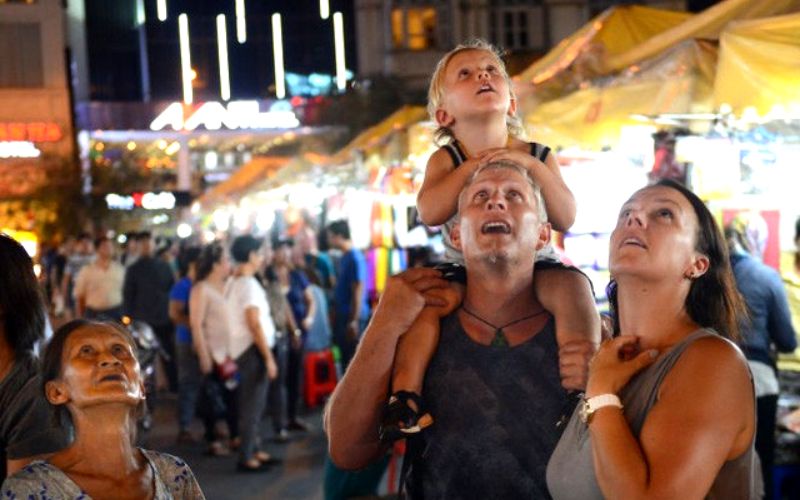
A night market in Ho Chi Minh City
Visiting the South of Vietnam, you can also spend your holidays in seaside resorts. Phu Quoc Island, Vietnam’s largest one, has great beaches with turquoise waters and pristine white sand. Tourists can visit fishing villages, artisanal fish sauce production, pepper farms, and oyster farms. Cat Ba Island has several large and small beaches. If you visit Con Dao, you can also relax on pristine beaches unspoiled by mass tourism or experience sea tours or water sports like diving, snorkeling, and canoeing. Mui Ne and Phan Thiet are also popular tourist destinations with many activities such as jet skiing and kayaking.
Here are the Most Popular Tourist Destinations in Vietnam for 2023/2024.
Biggest festivals in Vietnam
- New Year: January 1
- Tet Holiday (Lunar New Year): 3 days before and after the 1st day of the 1st lunar month. It is the biggest traditional Vietnamese festival.
- Hùng Kings’ Festival: 10th day of the 3rd lunar month – Phu Tho province
- Labor Day: May 1
- Trung Thu (Mid-Autumn Festival): 15th day of the 8th lunar month
- Vietnam National Day: 2nd September
- Christmas Party: December 25
Accommodations in Vietnam
When searching for a Vietnam travel guide, one of the things travelers care most about is where to stay in Vietnam. The great thing about Vietnam is that you never have to worry about finding a place to stay. In Vietnam, you’ll find plenty of great and affordable hostels, as well as many other great options like traditional homestays, affordable Airbnb, and even high-end hotels and resorts. If you’re looking for a safe place to relax and meet other travelers, you won’t be disappointed. There are many Rooftop Bars where visitors can unwind, enjoy a lively atmosphere, and take in the breathtaking views of the city.
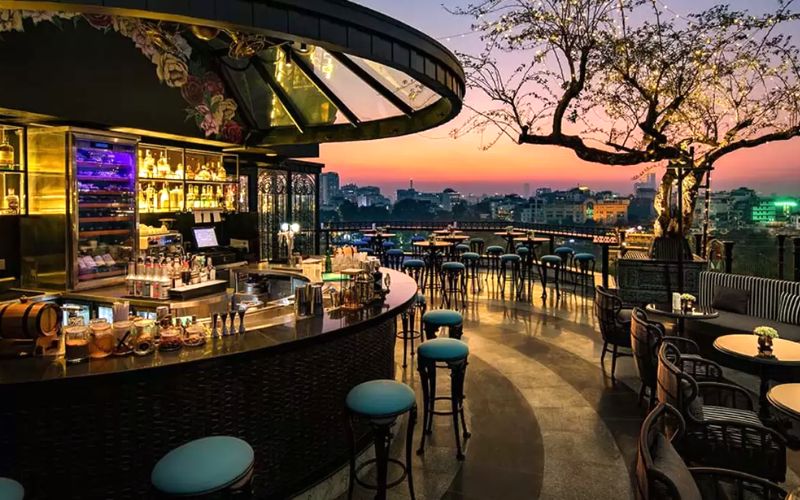
Terraço Sky Bar
Vietnam travel tips
We hope the information in the article “Vietnam travel guide” will be helpful to you. Here are some other tips that you should keep in mind when coming to Vietnam
Domestic flights, trains, taxis, bicycles, moto-taxis, scooters, and private cars are all options in Vietnam. It is simple to purchase tickets and rent these modes of transportation. However, due to the complicated traffic situation, riding a scooter is not recommended. Vietnam Airlines, the country’s four-star airline, is the country’s largest one.
If you want to explore the mountainous regions of Vietnam, it is best to rent a car with a driver. With a team of professional drivers, we provide not only helpful Vietnam travel guide but also car rental services in Vietnam. Please contact us for more instructions.
- Except for some ethnic minorities, Vietnamese is the official language of Vietnam and is spoken by approximately 85% of the population. English, French, Chinese, and Japanese are among the other foreign languages taught in schools
- The Vietnamese Dong is the country’s official currency (VND). VND is accepted in all transactions and purchases in Vietnam. Visitors can use US dollars or Euros in some establishments such as hotels, restaurants, and souvenir shops.
- In Vietnam, we use 220V, 50Hz, and 2 or 3-pin electrical outlets. WiFi is relatively good in hotels, but sometimes there is no free wifi in public places.
- Use insect repellent when visiting mountainous areas.
- If you’re visiting Vietnam in the summer, don’t forget to bring sunscreen and a hat.
- Drink bottled water instead of tap water.
Useful phone numbers (available in all cities of Vietnam)
- 110: International telephone service
- 113: Police
- 114: Fireman
- 115: Ambulance
- 117: Spoken watch
- 1080: Social, economic, and cultural Vietnam travel guide (Vietnamese, English, French)
Top Vietnam Destinations
Start planning your tailor-made tour with 1-1 help from our travel advisors.
- Plan your tailor - made trip with a local expert
- Book securely with money-back guarantee
- Travel stress-free with local 24/7 support
